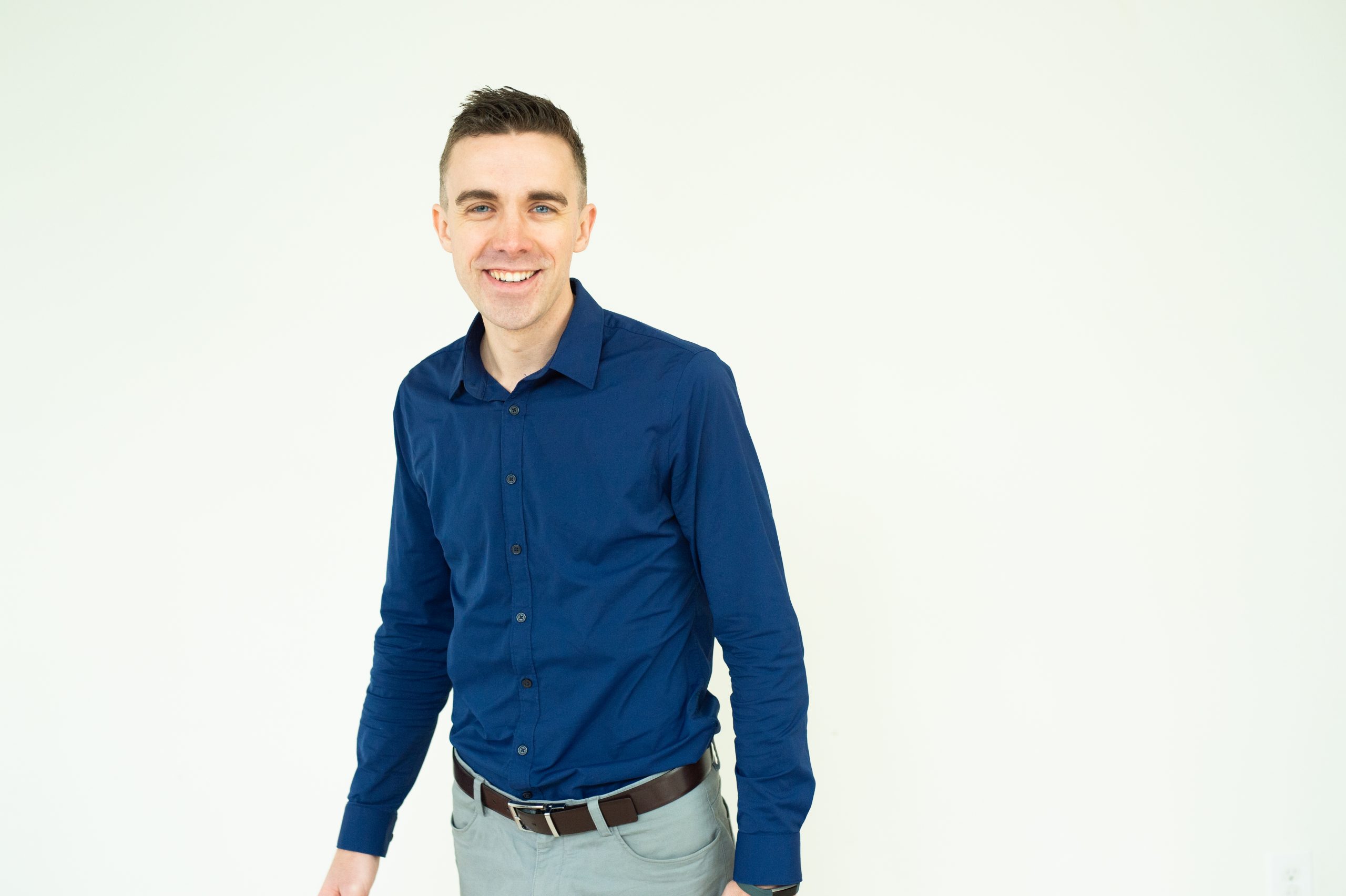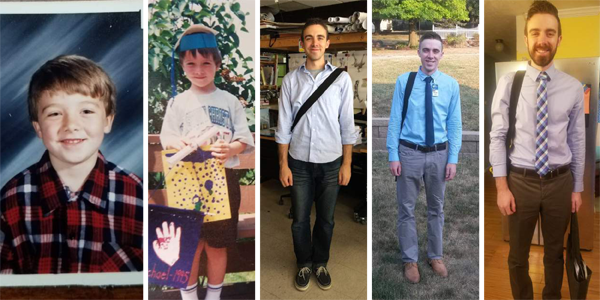
Somewhere in a dusty shoebox, a photograph exists of my first day of kindergarten. Probably fresh white socks and an oversized backpack with soccer balls emblazoned on it, with a little round face smiling that he will get to go learn phonics. I was a cute kid (if I can say so myself), and first days were always exciting–awaiting the adventures of new friends, a new teacher, a new year of learning.

I have a photo of each of my twenty first days of school, from kindergarten to college and into graduate school–not even the supposed dignity of higher education could stop that tradition–and in each one, there is that familiar glimmer of upcoming learning, of new-notebook-smell, a flickering gleam of awaiting adventure behind the classroom door.
But I imagine those photographs might look different this year. Maybe some new clothes, but more likely sweatpants and masks. Maybe at the kitchen counter, but with our laptops and webcams in the background. Maybe no studio desk or snoozing lecture hall. This is a tough year to be a design student, whether fresh to the bleary-eyed architecture buildings or returning to close out your thesis project.
For better or worse, universities are largely back in session–and we will not debate the underpinnings of those decisions here. Rather, I wonder how we address and support the realities of students, who may be learning architectural history from a dining room table, or cautiously coming into a distanced studio desk once a week for murmury feedback through a mask, or struggling to understand structural principles on your own alongside paying your tuition bill and buying only the books you really need. It’s tough to imagine.
I wish I could change this reality for you. Design education is vibrantly beautiful, a petri dish of creative energy and cheap coffee, dented egos and smudgy fingers and model magic. It is inspiring; it is gritty; it is occasionally all-consuming and brilliant. Having had the privilege of being both student and teacher, I am immensely amazed at the tenacity of students and faculty right now, fighting to keep the spirit of design education lively from kitchen tables and spare rooms, sharing the nuances and hard lessons of studio via videochats and “Can you see my screen? How ‘bout now?” What you are learning now will not be in vain, and it certainly will flavor the designs you will bring to the profession. As a discipline built on new ideas, we welcome this infusion from you, forged in the crucible of a university experience for which you never asked.
AIA Virginia, each of our regional component chapters, and every design professional I know of is here to support this fragile time for designers. From mentoring programs, internships, and financial support, to virtual networking events to whatever else we can think of, the profession of architecture–and of each of our firms and institutions–depends on the success and energy of young designers. Getting connected to AIAS at Hampton, UVA, Virginia Tech, and the WAAC opens up networks and leadership opportunities that last beyond your degree. Joining VANOMA (or NOMAS) as both BIPOC individuals and allies contributes towards confronting and eradicating white supremacy and supporting opportunities for equity in architecture. Entering (and winning) competitions serves to sharpen your design chops and is eye-catching in a portfolio. Begin drafting your resumes and start scanning your sketches for your portfolios. Read as much as you can. Write about something you are intrigued by, and submit it to a newspaper, a design publication, or a student paper. Ask for help. Consistently show up prepared and on time. These practices are always in conversation with your academic work, contributing to a rising tide of design excellence that encompasses broad skills and big ideas.
Despite it all, design students will keep designing and staying up far too late, and teachers will continue attempting to impart knowledge and resent having to give grades. In the meantime, know that the design professionals cheer you on, are here for whatever you need, and are ready to hire you. While we were students once ourselves, you will have much to teach us about adaptability, tenacity, and the benefits of human-centered design of all our built spaces.
In solidarity and action,
Michael Spory, Associate AIA
spory@vmdo.com
Just a Few Fun Things to Click On
Something to register for: Registration for AIA Virginia’s annual conference is up and running! Under the banner of Foresight 2020, this year’s trio of programs(ArchEX, Design Forum, and Visions for Architecture) has gone virtual, with a killer lineup, with lots of discounted options for educational, professional, and networking programs during the entire month of November. Take special note of the speaker lineup for Design Forum on Thursday, November 5–with presentations from partner Kristen Murray from Olson Kundig and David Lewis from LTL Architects, and a keynote from Steven Holl himself.
Something for Virginia emerging professionals: Join us for YAFcon 2020: The Empathic Architect, which is a week-long virtual series of engaging conversations about designing and practicing with intentionality. Join your fellow EPs the week of Oct. 26–Oct. 30 for a daily series of peer-led discussions over lunch, and presentations by purposeful — sometimes unconventional — leaders each evening. Registration is intentionally kept low-cost to make it easy to attend–it’s only ten bucks for students!
*YAFcon is an annual gathering of the Young Architect’s Forum (YAF), which promotes the professional growth and leadership development of emerging professionals, including early and mid-career architects and unlicensed professionals on both traditional and non-traditional career paths.
Someone to know at Hampton: Robert Easter is the faculty advisor for AIAS and NOMAS at Hampton, and Shahada Allah (President; Shahadah.allah@my.hamptonu.edu) and Shanice Robinson (Secretary and Immediate Past-President, shanice.robinson@my.hamptonu.edu) are the leaders of the Hampton chapters. Wherever you might be, they would love to hear from you about getting connected to other Pirates!
Someone to know at Virginia Tech: Kevin Jones (kejones4@vt.edu) is the faculty advisor of AIAS at Virginia Tech, which also hosts a chapter at the Washington Alexandria Architecture Center (WAAC), and the AIAS leader is Ben Sturkie. Also, CL Bohannon (cbohanno@vt.edu) is the faculty advisor for NOMAS, which is leader by Aria Hill (ariahill@vt.edu). Hokies are everywhere!
Someone to know at UVA: Phoebe Crisman (crisman@virginia.edu) is the faculty advisor for AIAS at UVA. She can get you in touch with the right people.
Some ways to take action at your school: Along with the national NOMA organization and the about-to-launch VANOMA, each of the Virginia design schools has active chapters of NOMAS. Contact leaders at UVA, Hampton, Virginia Tech to learn more about diving in as a leader or ally. Some ARE testing updates from NCARB: Testing in person is (almost certainly) coming! We expect that on Monday, November 16, 2020, candidates can schedule remote-proctored appointments, while still being able to test in-person at Prometric test centers. The actual ARE content and division structure will not change–more information about exam delivery changes will be released in mid-September. NCARB expects to release updated ARE Guidelines, ARE Handbook, and a new demo exam in October. These changes will keep the exam’s rigor, while providing candidates with greater flexibility and accessibility. In summer 2021, NCARB is slated to switch to a new test administration vendor, for both in-person and remote testing. Visit NCARB’s website for details.
